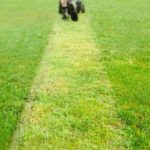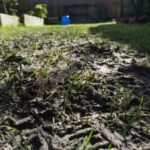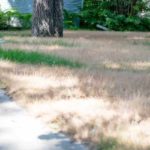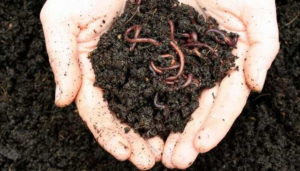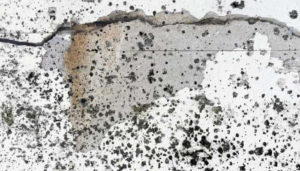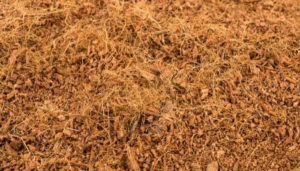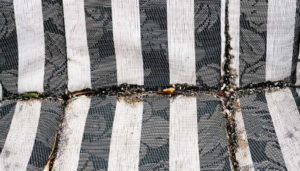You need healthy soil in your yard, not only if you are gardening. You need it to maintain your landscape plants and your grass. Not to mention, it helps keep trouble plant pests out. The ideal soil is loamy soil – that perfect mix of sand, silt, and clay. However, we don’t always inherit this kind of soil.
That’s why it’s important to know how to check your soil health by investigating the amounts of life and organic materials in your soil. You should also check your water drainage, tilth soil structure, and the pH and mineral levels in your soil.
Soil isn’t just dirt, it’s actually an ecosystem all to itself. There are specific steps that you can take to test your soil’s health on your own. There are also several methods you can manage on your own to invigorate your soil for a healthier lawn. Let’s look into those.
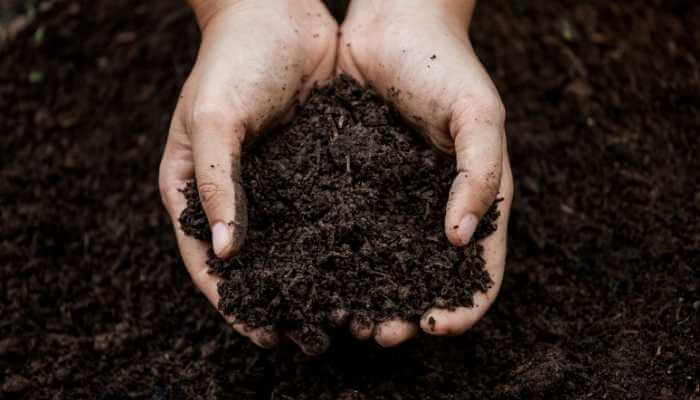
Does Your Soil Have Abundant Life?
The first thing you need to do when running your own simple tests to determine if your soil is healthy or if it’s lacking something is to look for signs of life. Soil should have all kinds of life in it: earthworms, insects, nematodes, bacteria, and fungi. Each of these has a specific role, but all lead to access to air, water, and nutrients for your plants.
Because healthy soil should always be plentiful with life, there are two simple DIY tests you can perform to be sure it has abundant life. You’ll need a shovel and time. Walk around your yard to widespread random spots. Shovel in those few places around your yard to at least 6 inches in depth (15cm).
How many earthworms per shovel full were there? If there were 5 or more, you have extra healthy soil. Congratulations! If you find fewer than 5, your soil may not be as healthy as it should be. If you find 2 or fewer earthworms in a shovel full of dirt, your soil is not healthy.
You can also just count ANY wildlife in and around the hole you’ve made or in the soil you’ve dug up. I’m talking about centipedes, spiders, worms, beetles, etc. The more you count, the merrier. Anything less than 10 makes me think that maybe your soil isn’t as healthy as it could be.
But how do you check for fungi and bacteria levels? Good question. If you’re not using professional testing, a simple test is right under your nose. Literally! It’s the smell. Active soil bacteria make soil have a rich, earthy smell. Bad bacteria and fungi will make the soil smell putrid or at the very least very nasty and repugnant.
Remember that bacteria come from the organic matter in your soil. Bacteria can be good or bad, balanced or overly abundant. And this is a reflection of whether you have the correct kind of organic matter in your soil and also whether you have just enough organic matter in your soil or too much.
Make Sure Organic Material is Present
Organic matter for your garden and even for your yard soil is important. This can be compost, manure, earthworm castings, old clippings, leftover fallen leaves, straw, or anything else that was once living and now is being broken down in your soil.

Did You Know?
Chickens are a great way to add more back into the soil. You dump compostable material and seed into the area that needs it, and they will scratch and tear things apart. They’ll also scratch their own droppings, adding to the top layer of soil a nutrient-rich organic matter.
Manure has to be handled in a limited way, because of contaminants in it, but it can add nitrogen to your soil. You really only want to add ¼ – ½ inch of these things to your garden or lawn per season. And before adding, you should know that it’s needed.
If you want to know how much organic matter is in your soil, and how much you may need to add, it’s important to first realize what makes up your soil and how your own yard’s soil breaks down. Soil is usually organic matter mixed with either an abundance of silt, clay, and sand. The most healthy soil is called “loam” or “loamy soil” usually made up as:
- 38% Silt
- 38% Sand
- 20% Clay
- 4% Organic Matter
But no matter what – there should always be some organic matter.
To test the make-up of your soil, you’ll need a 1-quart or 1-liter glass jar (or clear plastic) with a lid. After digging up several different soil samples from various parts of the yard, use 4-inches (10cm) of that dirt in the bottom of your container. Fill the jar the rest of the way with water and add a tight-fitting lid.
Now you’re going to shake the jar up vigorously and let it stand for 24 hours. The soil will settle and you’ll be able to see what it’s mostly made up of. For your ideal – a good loam soil – would show 1 ½ parts sand on the bottom, 1 part silt next, 1 part clay next, and then ½ part organic matter.
If you have more sand or more clay than mentioned, you may need to till and add in more of what’s missing. You may also need to add in more organic matter. Your soil needs to have anywhere from 3% to 5% organic matter.
Does Your Soil Have Good Water Drainage?
You want your soil to be able to drain water appropriately but also water is needed for all plants to survive, so you want the soil to be able to be infiltrated by water easily.
If your yard tends to let water stand easily or after a good soaking rain, your plants and grass begin showing wilt or dryness – signs of thirst – too soon, it could mean you have compacted soil that needs help.
To test how well your soil allows water infiltrations and drainage, dig a hole in your yard that’s 1-foot (30cm) squared and 1-foot deep. Or, I suppose you could describe this as removing a 1-foot cube of soil from your yard). Fill the hole with water and let it drain away. Refill it, but this round, time how long it takes for the water to drain.
If your soil drains in less than 2 hours, you may need to add more organic matter to your soil. But, if your water takes longer than 6 hours to drain, the soil makeup is of a compacted nature and you may need to add not only more organic matter, but also other soil types that are looser, more gritty, or sandier.
What is Tilth?
Tilth is a fancy word for “soil structure after tilling”. If your soil is compacted it doesn’t just affect the drainage, of water, it also affects the availability of water to the roots. So, you need to be sure the soil has a good texture to allow for both drainage and intake of water. You need to first check the tilth.
How do you check tilth? Well, first you’ll need to dampen a portion of your soil or do this early when the dew has made it moist or maybe right after a good rain. You’re going to dig a 6 – 10 inch (15 – 25cm) hole in the damp soil. There are various ideas of what to do past this point, so you choose or do both.
You can grab a handful of the soil you’ve just dug up and squeeze it as tightly as you can manage. Then, you’ll need to release the clump of dirt. Ideally, the soil should hold together in that clump, until you poke it with your finger. Once it’s poked, the clump should fall apart.
Conversely, you can remove a cup-sized portion of your damp soil from the part of the yard you’ve dug into and break it apart. Feel it. Healthy soil should be made up of clumps of various sizes. Healthy soil breaks apart easily, showing that it allows water and air to move around it. If the soil doesn’t break apart easily, it’s possibly too hard or has too much clay in it.
Some people swear not by digging a hole, but instead, by using a long piece of wire. They insert this into the ground and expect it to go at least a foot before stopping (well, unless they hit a rock). If the wire repeatedly begins to bend before it reaches a full foot into the earth, you may have compacted soil in your yard.
So what does this mean? It means you may need to till your soil and add more sandy soil or organic matter to help it become less compacted. I’ve dealt with Carolina Clay for a large portion of my life, so I know for a fact that any yard in the piedmont needs grass and plants that are hearty in that compacted kind of soil or you will need to till it and add something to it.
I have in the past added sandier, looser soil along with maybe some extra organic material (compost, etc). Then, I tilled all of it together so that it’s aerated and no longer compact – ready for being more healthy and of course ready for seeding.
Keeping Good Soil pH and Major Nutrients Levels
Most state universities and some Cooperative Extension Services will offer free soil testing. Usually, the homeowner can call or look up guidelines for this online. The process usually includes sending off a sample of your soil to be tested. The results usually include needed information concerning pH, soil texture, nutrients, and organic matter. The results might even provide fertilizer recommendations.
In Conclusion
Having a healthy lawn adds to the value of the home, but it also provides a safe place for you, your family, friends, and pets to thrive. Whether you garden in your yard or not, that healthy soil can come in handy for providing the lush, natural carpet of grass, clover, or whatever you encourage. Keeping your soil healthy and good crops and grass growing also pushes pests or invasive species out of your yard. So, I hope my article helps you test and then work on achieving the healthy soil your backyard (and front yard) needs.

